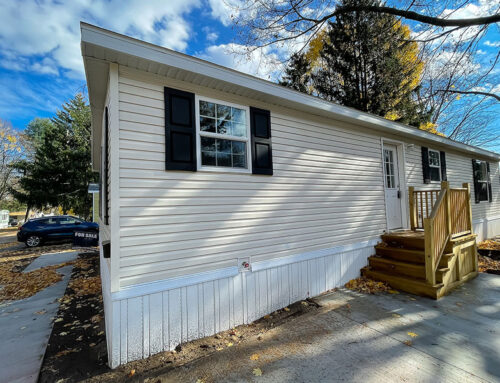If you spend any time interacting on social media with real estate investors, you’ve probably noticed that most regard rent-controlled properties as a poor investment. Many are left wondering, “Why would you buy something that will bring in reduced revenues, potentially for years to come?” I disagree. Admittedly, I’ve encountered a situation (or three!) where I’ve fired up a heated online discussion about how rent-controlled properties can help to diversify a New York real estate investment portfolio for long-term gains.
Here’s my thinking. Rent-stabilized properties are usually dirt cheap compared to market rate rentals, making them attractive real estate investments for savvy investors like me. For buy-and-holds, I’m banking on the value increasing over time. And, if I can get the rent-stabilized units deregulated in the meantime, it’s even better! Contrary to popular belief, it is possible to get rent-stabilized units deregulated. We’ll explore this topic, but first, let’s take a look at the concept of rent-stabilization—also known as rent control—and how it impacts property owners in New York City.
WHAT IS A RENT-STABILIZED APARTMENT?
While there are two types of rent control in New York, you will most often encounter one of the nearly one million properties that were rent-stabilized in 1969 as a result of rising rental fees in post-war buildings. Tenants in these units are protected from market-rate rent increases because the Rent Guidelines Board sets the maximum rate of annual increase for rental fees. There are generally three categories of rent-stabilized units:
- Units in a building built between 1947 and 1971 with six or more units;
- Three or more units in a building constructed or extensively remodeled since 1974 and has special tax benefits; or
- Six or more units in a building constructed before 1947 and is inhabited by a tenant who moved in after 1971.
Adding complexity, a rental property can have a combination arrangement whereby some units are rent-stabilized, and some are not.
Clear as mud, right? To make matters worse, there are plenty of exceptions to these guidelines. But, here’s what we can generalize: Rent-controlled units are typically found in buildings built prior to 1974 and contain six or more units. These buildings are not part of a co-op, nor are they condos. For the sake of simplicity, I’m only going to focus on rent-stabilized units because that’s what investors encounter most often in the New York City real estate investing market.
YOU BOUGHT A RENT-STABILIZED UNIT… WHAT NOW?
New York City tenants’ rights are very strong, so it’s no wonder that it can be difficult to deregulate a rent-stabilized investment property. If your property has a rent-stabilized unit, you MUST renew the tenant’s lease with the same terms and conditions as before, with a few exceptions. There are, however, certain circumstances that may allow you to deregulate rent-stabilized units. Let’s explore a few.
TAKE OVER THE UNIT YOURSELF.
You may choose not to renew the tenant’s lease if you or an immediate family member needs the unit for a primary residence. But, there is some risk. If, after you take possession, you or your family member doesn’t occupy the unit for three years, you may lose the right to rent increases in the other units that you own in the building.
DEMOLISH THE BUILDING.
This sounds dramatic but let’s be realistic. As real estate investors, we find good deals on distressed properties. Some of these buildings are in such disrepair that it makes sense to demolish it and rebuild. To follow through with this plan, you’ll need to seek permission from DHCR and prove your financial ability to manage the project.
PROVE THE TENANT’S INCOME IS HIGH.
If the rent on your unit has reached DHCR’s threshold of $2,700 per month and the tenant’s combined federal adjusted gross income is higher than $200,000 for two years running, you may be granted an order of deregulation.
NOTE: You may NOT dislocate a tenant who is 62 years of age or older UNLESS you provide an equivalent property nearby at the same or lower rent.
Before taking any of these steps, you will want to research the process thoroughly with your legal and financial advisors to make sure you have the legal standing and the financial resources to follow through. Failure to do so can bring costly consequences.
IT’S STILL GOOD, EVEN IF THE STARS DON’T ALIGN
Even if the circumstances and opportunity aren’t quite right for deregulating the rental rates on investment property, there’s still a benefit to buying an apartment that is rent-controlled and keeping it in your portfolio. For one, the risk of having a costly vacancy in your unit is very low. And eventually, the natural progression of rent increases will bring the building out of the rent-control cycle. At that time, the difference between what you paid and what you can sell it for will likely be much more than if you invested in a market-rate property.
HomeVestors® stays on top of New York real estate investment opportunities and trends. To learn more about the issues that might affect your investments and how to navigate them, check out other leading real estate investing resources.
Each franchise office is independently owned and operated.
Contact
"*" indicates required fields





